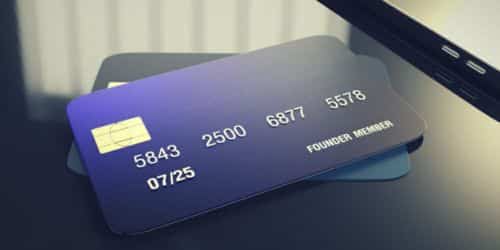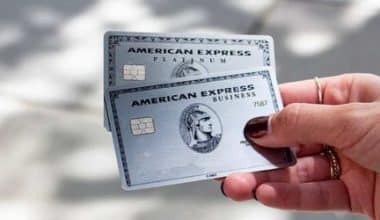Have you ever pondered the inner workings of your trusty debit card nestled in your wallet? Debit cards are a convenient financial tool that combines the essential features of an ATM card and a credit card. This allows consumers to effortlessly withdraw cash from their bank accounts whenever they need it. Debit cards offer a convenient payment option for various transactions, including online purchases, point-of-sale transactions, and mobile wallet payments. Instead of the traditional method of writing a check, debit cards provide a hassle-free alternative for making payments. Continue reading to learn about debit cards, kids debit cards, how to rent a car with a debit card, and the difference between a debit card and a credit card. (debit card vs credit card).
Overview
A debit card is a payment card that deducts the transaction amount from your account when you withdraw cash or make a purchase. Debit cards solely provide access to the funds available in the associated account, typically a checking account. Upon opening a checking account, a financial institution issues a this card. At times, the use of a debit card incurs no charges. There may be times when you have to pay a fee to use the card. Debit cards bear a resemblance to credit cards. However, they do not function similarly. Credit cards enable the utilization of borrowed funds. Debit cards facilitate transactions by utilizing the funds that are presently available in your bank account.
How Does a Debit Card Work?
A typical debit card is a rectangular plastic card that bears a resemblance to other types of payment cards. The account is connected to the user’s checking account, which is typically held at a bank or credit union. The size of the account, which is dependent on the amount of money in it, directly affects its spending limit. Debit cards are like a mix of credit cards and ATM cards. Debit cards offer the convenience of withdrawing cash from an automated teller machine and making purchases at various merchants.
Furthermore, numerous financial institutions are choosing to replace their standard, one-dimensional ATM cards with credit or debit cards offered by renowned card-payment processors like Visa or Mastercard. Debit cards are typically provided automatically when opening a checking account. It also serves a dual purpose of withdrawing cash or making purchases, operating similarly for both. It promptly deducts the amount from the linked account. As an accountable spender, it’s important to remember that you can only spend as much as you have in your bank account. The precise amount of money at your disposal will vary daily, in tandem with your account balance. Most debit cards have limits on how much can be spent in a 24-hour time.
Kids Debit Card
Debit cards are one of the most underrated resources for teaching responsible financial management. To many parents, kids debit card serves as a crucial source of much-needed guardrails to protect their kids while they explore the world of money. Kids debit card offer a convenient approach to practice responsible money management. This is because they introduce children to the concept of budgeting at a young age and give them a taste of financial independence (although in a reduced form). However, if you’re looking for more than just any debit card for kids, then read on to learn the top kids’ debit card.
#1. Greenlight
Greenlight is the most popular and reliable prepaid debit card and mobile banking app1 for young adults. Parents can place custom limits on their children’s spending and receive instant alerts whenever their children make a purchase. There is a 1% Cash Rebate to Savings for every swipe.
#2. Step Debit Card
The step is for teens and young adults who are ready to learn more about personal spending. There is no age limit, but the program is made for those who are ready to do so. Step works just like a debit card, using the money you’ve already loaded onto the card to make transactions. The Step card is unlike a debit card in that it treats all purchases as credits; this allows your child to responsibly establish credit without the risk of overdraft penalties or interest charges. We also appreciate that Step automatically transfers spare change from purchases to savings whenever possible. Plus, when your teen uses it at participating establishments, they’ll rack up even more reward points.
#3. GoHenry
The GoHenry debit card took first place in the interactive games category because its Monetary Missions feature allows kids aged 6 to 18 to play games and earn digital badges. The program covers banking fundamentals, how to establish positive saving habits, and even how to invest in bite-sized, suitable brief lessons for younger children. Overdraft security, which instantly refuses your kid’s transactions when they surpass their balance, is another bonus.
#4. Chase First BankingSM
The Chase Mobile® App provides convenient banking services for both of you in one convenient location. Hence, with this mobile app, you can manage all of your accounts, and make free deposits and withdrawals at any of the 16,000 Chase ATMs nationwide.
One of the greatest free debit cards for kids that can be used anywhere Visa can be utilized is at the heart of Chase First BankingSM. Need guidance and control over your child’s finances? The Chase Mobile® app allows you to customize your spending habits with notifications, limitations, and even geographical zones. Use the Chase Mobile® app as a teaching tool for budgeting, saving, and earning with your children. Chase First BankingSM enables parents to teach financial responsibility to their children by providing both the parental oversight and independence young people need to develop sound financial habits. You must be a Chase customer with a Chase checking account to proceed.
#5. BusyKid Prepaid Visa Card
This is the most budget-friendly paid option on our list and is a great tool for parents who want to teach their children about the value of saving money. Young people can put money away in a savings account, buy stocks, or give to charity with the proceeds. Like a miniature 401(k), you can match your children’s savings. In addition, bonuses might be sent as rewards for things like outstanding grades or simply because.
Debit Card to Rent a Car
Is it possible to rent a car using a debit card? The answer is complex and multifaceted. It is the preference of rental car companies that customers utilize a credit card to rent a vehicle. Several establishments will let you pay with a debit card, but they may have certain rules you have to follow first. As an example, the organization may request that you provide an initial payment or go through a credit evaluation. It is also possible that the age requirement may be raised or that renting a high-end vehicle may be restricted. Below is the debit card to rent a car:
#1. Chase Sapphire Reserve
Due to its premium travel insurance and bonuses, this debit card is highly favorable to rent a car. The $550 annual charge Sapphire Reserve is mostly for travel. Therefore, when utilized strategically, this card’s advantages make it a worthwhile investment.
In addition to offering lease discounts and primary automobile rental insurance for theft or collision, the owner of the card is eligible to earn an enhanced rewards rate when making reservations with this debit card. Customers have the opportunity to accumulate a total of 10 times the points on auto rentals and lodging by utilizing this debit card to rent a car.
#2. Hertz
It is possible to utilize a debit card to rent a car from Hertz. It will be necessary for you to authorize the deposit of $500 in your bank account. At airport locations, it is mandatory to present evidence of your return ticket, whereas non-airport areas require you to make a reservation for your car rental at least one day before the pick-up date. To expand your vehicle leasing options beyond smaller through full-size types, it is necessary to link your debit card to a Hertz Gold Plus account as well.
#3. Platinum Card offered by American Express
This card provides comprehensive coverage for harm and loss incurred during car rentals, in addition to offering free privileges as a member for premium car rental programs. American Express Travel offers cardholders the opportunity to earn extra points on prepaid cards car rentals, up to a maximum of $500,000 per year of validity. Additionally, it provides a maximum of $200 in Uber credits for transportation to your residence or a distant parking facility for your personal vehicle, and does not impose foreign transaction fees.
#4. Chase Sapphire Preferred Card
This card provides main auto rental insurance for wreckage and collisions, similar to the Chase Sapphire Reserve. However, it has a substantially lower yearly fee of $95. The insurance policy provides coverage for lease periods of up to 30 days. Due to its low annual fee, cardholder benefits, and travel protections, this credit card is a popular choice for novice travelers. Hence, by reclaiming points for travel through the Chase portal, users can earn a 25% points-value expansion. This includes travel expenses such as rental vehicles, flights, hotels, and travel weekends.
#5. Platinum Card from American Express
This card provides comprehensive coverage for loss and damage incurred during car rentals, in addition to offering free perks as a member of premium car rental programs. American Express cardholders are eligible to earn additional points on prepayment car rentals made through American Express Travel. This offer is valid up to a maximum of $500,000 per year of use. Additionally, it provides a maximum of $200 worth of Uber credits for transportation to your residence or a distant parking facility for your vehicle and does not impose any foreign transaction charges.
Debit Card vs Credit Card
There are significant distinctions between credit cards and debit cards, even though they have a similar physical appearance and share some features, such as card numbers with 16 digits, expiry dates, and emblems branded by Visa or MasterCard. Below, we will list the distinct differences between a debit card and a credit card.
Firstly, debit cards, in contrast to credit cards, are tied to a checking account and take money out of that account instead of issuing credit. A credit card, on the other hand, does not deduct funds instantly but rather charges interest on all purchases made. ( Debit card vs credit card)
Secondly, debit cards provide a safeguard against overspending as they restrict the user to the funds available in their checking account. However, using a credit card entails the potential of exceeding one’s financial capacity. It is important to note that having a credit limit of $1,000 does not necessarily equate to being able to accommodate such expenditures within one’s monthly budget. ( Debit card vs credit card)
Lastly, upon using a debit card, the corresponding funds for the amount of the transaction are promptly deducted from the linked checking account. However, when utilizing a credit card, the equivalent amount will be set to your line of credit, thereby allowing you to defer payment until a later date. This affords you additional time to settle the bill. ( Debit card vs credit card)
Is an ATM Card a Debit Card?
An ATM card is a debit card that can only be used at ATMs to withdraw cash. A debit card, on the other hand, can be used for a wide variety of transactions. Also, shops, restaurants, and ATMs accept them.
Can I Use Debit Card as Credit Card?
When using a debit card as credit, the cardholder signs their name instead of inputting a PIN. Your account will be temporarily frozen until the transaction is processed via Visa’s payment network. In most cases, the money will be removed from your account in a day or two.
Can I Withdraw Money From Debit Card?
Yes, you can either withdraw cash, deposit a check or cash, transfer money, or view your balance.
Can I Withdraw Money From ATM Without Debit Card?
You can withdraw money from an ATM after verifying that it accepts cardless transactions by following the on-screen directions. Then, you can tap your phone on the ATM’s reader in place of a debit card and input your PIN as usual.
How Do I Know if My ATM Card Is Debit or Credit?
There is a strong visual similarity between debit and credit cards due to their shared physical characteristics. Credit and debit cards may look similar, but card issuers make it simple to tell them apart.
References
- investopedia.com
- forbes.com
- money.usnews.com
- cnet.com
- finder.com
Related Posts
- 13 BEST AIRBNB CREDIT CARDS IN 2023
- 21 BEST CREDIT CARDS FOR TRAVEL REWARDS 2023 (Updated)
- How Much Can You Take Out of An ATM? ATM Withdrawal Limits
- How Much Can You Take Out of An ATM? ATM Withdrawal Limits
- KIDS’ BANK ACCOUNT: Best Bank Accounts for Your Kids
- ADJUSTED GROSS INCOME (AGI): Definition, Calculation, Effects on Taxes & Difference





